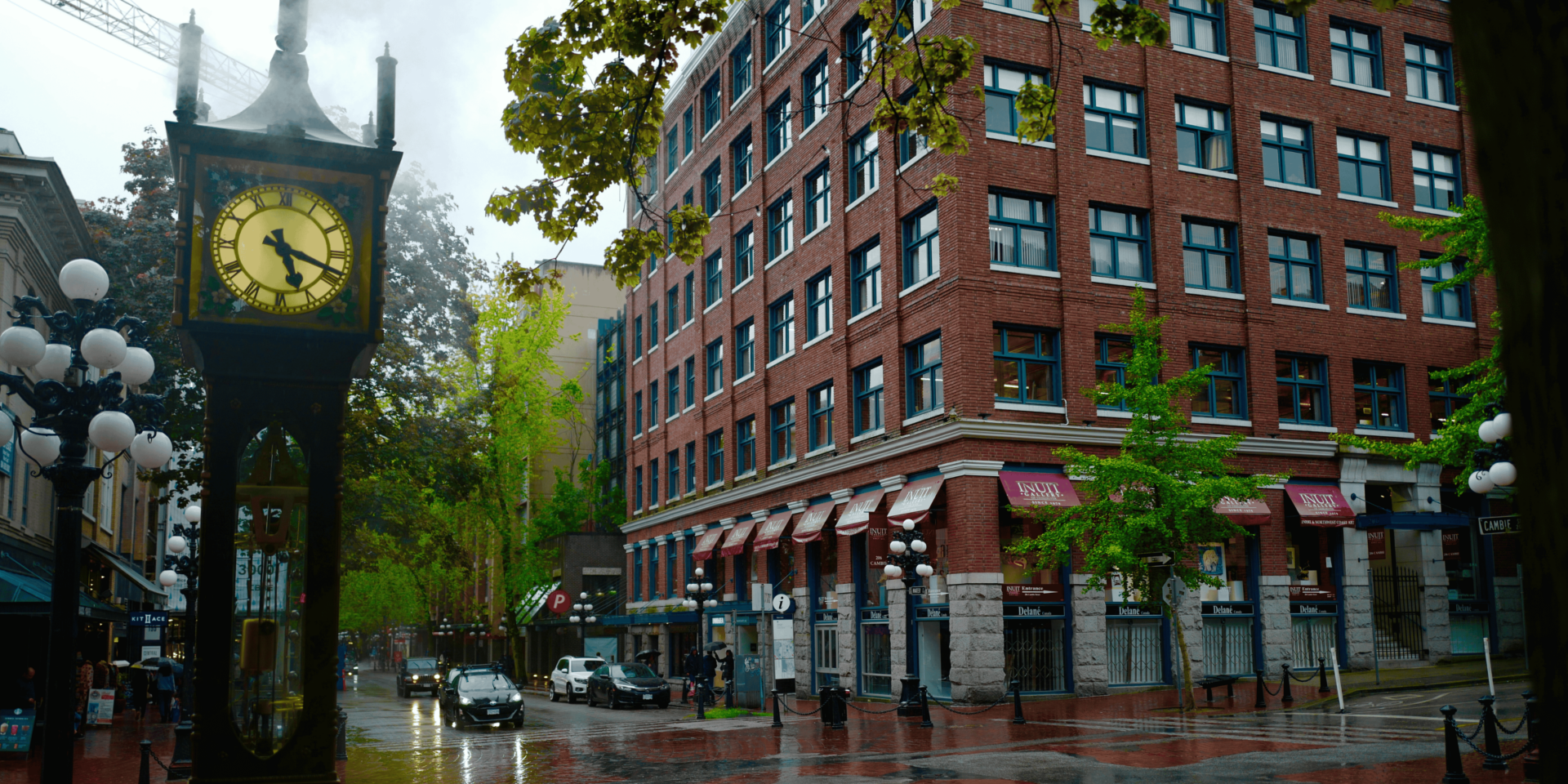Rain isn’t just part of Vancouver’s weather—it’s part of the city’s character. The soft, steady drizzle gives the streets a reflective glow and brings out deeper tones in buildings, foliage, and pavement. For photographers, these conditions create a distinctive atmosphere that defines the city’s visual mood.
Why Moody Photography Works in Vancouver
Vancouver’s muted color palette and overcast skies give photos a cinematic quality. Rain enhances texture and contrast, helping details stand out without harsh light. Wet surfaces reflect city lights and skyline silhouettes, creating layered, emotional images. This environment supports storytelling through shadow, reflection, and tone.
Capturing the Mood Through Light and Texture
Moody photography depends on how light and texture interact. In Vancouver, rain softens direct light, which prevents sharp highlights and deepens natural shadows. Sidewalks glisten, buildings darken, and clouds blur the skyline. These elements add emotional weight to simple scenes. A puddle, a foggy window, or a rain-coated jacket becomes a focal point that conveys atmosphere.
Urban Landscapes Take on a New Depth
Rain changes how the city looks and feels. Streets slow down. People move with umbrellas and hoods up. Cars reflect in the pavement. The city becomes quieter, more introspective. For photographers, this shift opens space for compositions that feel personal and layered. Every shot becomes more than a view—it becomes a moment within the city’s rhythm.
A Realistic Scenario: Documenting a Rainy Morning Downtown
Picture standing at a street corner in downtown Vancouver early in the morning. Rain falls in fine drops. Lights from a coffee shop spill onto the wet sidewalk. A cyclist rides past, their reflection stretching behind them in the puddle. You raise your camera, adjust for low light, and frame the shot.
This single frame captures more than weather. It reflects routine, place, and emotion—a true slice of city life shaped by rain.
Using Reflections to Frame the Scene
Rain brings natural mirrors to the city. Puddles and wet roads reflect everything from neon signs to tree branches. These reflections double the visual interest of a scene. Positioning your shot to include these elements creates depth. It also balances composition by adding texture and leading lines that guide the viewer’s eye.
Adjusting Your Camera Settings for Low Light
Overcast and rainy days often mean low light. For sharp, moody photos, adjust your settings to match the conditions. A lower shutter speed helps capture motion blur from passing people or raindrops. A higher ISO allows for cleaner images without flash. Use manual focus when rain affects your lens clarity. These technical choices support the tone you’re trying to convey.
Weather Conditions Add Authenticity to Street Photography
Photographing in the rain means working with real, uncontrolled elements. Wet clothing, umbrellas, fogged glasses—these small details bring authenticity. People behave differently in the rain. Their movements, expressions, and posture all change. Capturing these moments reveals how the city adapts, giving your photos more depth and context.
Editing Rainy Day Photos with Intention
Editing rainy-day photos means preserving the atmosphere, not overpowering it. Boosting contrast slightly can help define reflections and outlines. Lowering saturation may bring focus to the mood instead of color. Cropping to highlight tension or symmetry adds impact. Use post-processing to support the story your photo tells, not to rewrite it.
Rain Photography Captures Vancouver’s Emotional Landscape
Moody images reflect the city’s emotional tone. Rain softens the sharp lines of buildings and blurs the edges of busy scenes. It slows the city down and makes space for quiet observation. In photos, this translates to a sense of place that feels both grounded and poetic. Rain doesn’t hide the city—it reveals a different version of it.
Vancouver’s Rain as Creative Fuel
Rain in Vancouver doesn’t stop creativity. It shapes it. Photographers who embrace the weather find layers of meaning in ordinary scenes. Through foggy windows, puddled streets, and softened light, the city tells a more intimate story. With the right eye and timing, rainy days become the perfect setting to capture Vancouver’s deeper charm.
